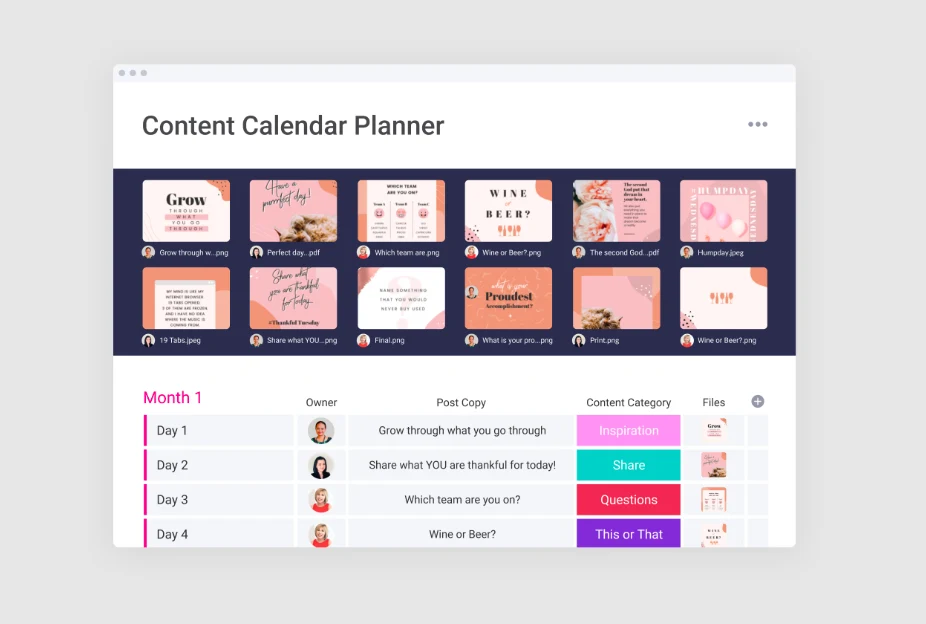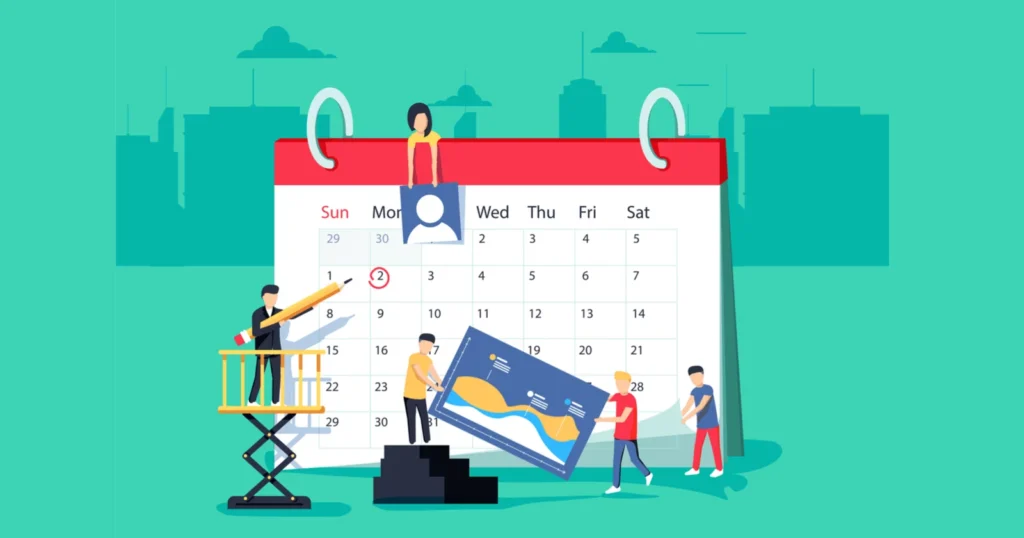Creating a Content Calendar to Streamline Your Marketing Efforts
In the hustle and bustle of digital marketing, staying organized and consistent is crucial for success. One of the most effective tools for achieving this is a Content Calendar. As we navigate through 2024, having a well-structured Content Calendar is no longer a luxury—it’s a necessity for streamlining your marketing efforts and maximizing your impact. Here’s how to create a Content Calendar that not only keeps you organized but also amplifies your marketing strategy.

1. Define Your Content Goals and Objectives
Before diving into the nuts and bolts of a Content Calendar, it’s essential to outline your content goals and objectives. What do you want to achieve with your content? Whether it’s increasing brand awareness, driving traffic to your website, or boosting engagement on social media, defining your goals will help shape your content strategy. By understanding your objectives, you can tailor your calendar to align with your overall marketing aims and ensure that every piece of content serves a purpose.
2. Choose the Right Calendar Format
Selecting the right format for your Content Calendar is key to its effectiveness. You can opt for a digital calendar, such as Google Calendar or a project management tool like Trello, or a more visual approach like an Excel spreadsheet or a dedicated content calendar tool. The choice depends on your team’s preferences and workflow. A digital calendar offers real-time updates and collaboration features, while a spreadsheet provides a customizable and straightforward solution. Choose the format that best suits your team’s needs and allows for easy tracking and updating.
3. Plan Your Content Topics and Themes
A well-crafted Content Calendar includes a variety of topics and themes that resonate with your audience. Start by brainstorming content ideas that align with your brand’s voice and audience interests. Consider incorporating different types of content, such as blog posts, social media updates, videos, infographics, and emails. Diversifying your content types keeps your audience engaged and caters to different preferences. Planning topics and themes in advance helps maintain consistency and ensures a balanced content mix throughout the month or quarter.
4. Schedule Content Publishing Dates
One of the core functions of a Content Calendar is to schedule publishing dates. Mapping out when each piece of content will go live helps prevent last-minute scrambles and ensures a steady flow of content. Be strategic about your scheduling: consider your audience’s peak engagement times and any relevant industry events or holidays. For instance, if you’re planning a campaign around Black Friday, make sure your calendar reflects the timing for teaser posts, main content, and follow-ups. Scheduling in advance also allows for better resource allocation and coordination with other marketing activities.
5. Assign Responsibilities and Deadlines
A Content Calendar isn’t just about dates; it’s also about delegation. Assign specific content creation and management tasks to team members, ensuring that everyone knows their responsibilities and deadlines. This clarity helps streamline the content production process and ensures accountability. For example, designate roles such as content writer, graphic designer, and social media manager, and set deadlines for each stage of content creation, from drafting to final approval. Clear assignments and deadlines help avoid bottlenecks and ensure smooth workflow.
6. Integrate Key Performance Indicators (KPIs)
To measure the success of your content efforts, integrate key performance indicators (KPIs) into your Content Calendar. Track metrics such as engagement rates, click-through rates, and conversion rates to assess how well your content is performing. Include space in your calendar for noting these KPIs alongside each piece of content. This integration allows you to monitor performance in real-time and make data-driven adjustments to your strategy. For example, if you notice a particular type of content is driving higher engagement, you can adjust your future content plans accordingly.
7. Incorporate Content Promotion Strategies
Creating content is only part of the equation; promoting it effectively is equally important. Your Content Calendar should include promotion strategies for each piece of content. Plan out social media posts, email blasts, and any other promotional activities that will support your content. By scheduling these promotional efforts alongside your content publishing dates, you ensure a cohesive approach that maximizes reach and engagement. For instance, if you’re publishing a blog post, plan social media teasers, email notifications, and any influencer collaborations in advance.
8. Review and Adjust Regularly
A Content Calendar is a living document that requires regular review and adjustments. Periodically assess your calendar to ensure it aligns with your marketing goals and responds to any changes in your industry or audience preferences. Make room for flexibility and spontaneity—sometimes, timely topics or trending events may require you to adjust your planned content. Regular reviews help you stay on top of your content strategy and adapt to new opportunities or challenges.
9. Utilize Collaboration Tools
If you’re working with a team, using collaboration tools can enhance the effectiveness of your Content Calendar. Tools like Asana, Monday.com, or CoSchedule facilitate teamwork by allowing multiple users to access, edit, and comment on the calendar. These tools also provide visibility into each team member’s tasks and deadlines, ensuring everyone is on the same page. Collaborative features help streamline communication and ensure that all aspects of content creation and management are well-coordinated.
10. Monitor Content Trends and Analytics
Keeping an eye on content trends and analytics is vital for optimizing your Content Calendar. Stay updated on industry trends, emerging topics, and audience preferences to ensure your content remains relevant and engaging. Use analytics tools to track the performance of your content and identify patterns or areas for improvement. By incorporating these insights into your calendar planning, you can refine your content strategy and maintain a competitive edge.
A well-crafted Content Calendar is your roadmap to a streamlined and effective marketing strategy. By defining goals, planning topics, scheduling dates, and integrating performance metrics, you create a structured approach that enhances your content efforts and drives results. As you embrace the power of a Content Calendar, you’ll find it easier to stay organized, engage your audience, and achieve your marketing objectives with greater efficiency and impact.


